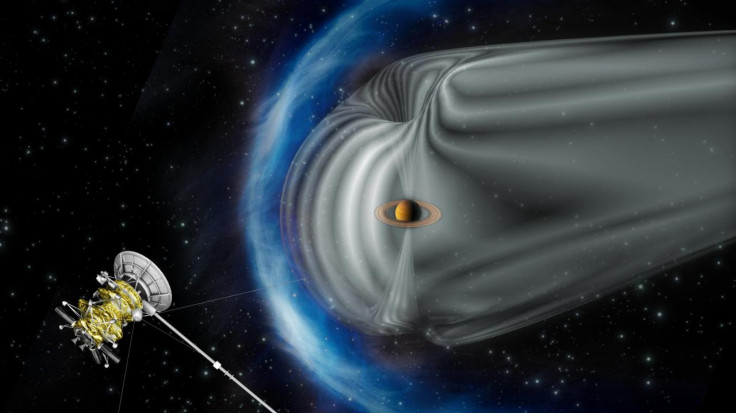Saturn’s Monster Storm, Erupted In 2010, Lofts Up Water Ice From The Planet's Depths: NASA

NASA's Cassini spacecraft has provided new data about a powerful storm, which erupted on Saturn about three years ago, helping scientists determine that the atmosphere on the ringed planet contains water and ammonia ice.
The monster storm on Saturn, dating back to late 2010, is considered to be the largest storm ever observed on the planet. According to a new study recently published in the journal Icarus, the storm was so intense and packed so much explosive power that it churned up water ice from deep within Saturn’s atmosphere.
"The new finding from Cassini shows that Saturn can dredge up material from more than 100 miles [160 kilometers]," Kevin Baines of NASA's Jet Propulsion Laboratory in Pasadena, Calif., and a co-author of the study, said in a statement. "It demonstrates in a very real sense that typically demure-looking Saturn can be just as explosive or even more so than typically stormy Jupiter."

The first hint about the monster storm in question appeared in data from Cassini's radio and plasma wave subsystem on Dec. 5, 2010. Scientists then observed that the storm quickly grew to superstorm proportions and surrounded the planet at about 30 degrees north latitude to envelop an area spanning nearly 190,000 miles.
According to the researchers, the storm worked very much like the smaller storms on Earth, which push air and water vapor high into the atmosphere, resulting in the towering, billowing clouds typical of a thunderstorm. However, scientists said, the towering clouds resulting from superstorms on Saturn are 10 time to 20 times taller and cover a much bigger area. They are also more violent than a storm on Earth.
The team of researchers, led by Lawrence Sromovsky from the University of Wisconsin found that cloud particles at the top of the storm were composed of a mix of three substances: water ice, ammonia ice, and an uncertain third constituent that could possibly be ammonium hydrosulfide.
“The classic model of Saturn’s atmosphere portrays it as a layered sandwich of sorts, with a deck of water clouds at the bottom, ammonia hydrosulfide clouds in the middle, and ammonia clouds near the top,” NASA said, adding that the storm apparently disrupted those neat layers, lofting up water vapor from a lower layer, which condensed and froze as it rose.
The water ice crystals then appeared to become coated with more unstable materials like ammonium hydrosulfide and ammonia as the temperature decreased with their ascent, according to scientists.
“We think this huge thunderstorm is driving these cloud particles upward, sort of like a volcano bringing up material from the depths and making it visible from outside the atmosphere,” Sromovsky said in the statement.
© Copyright IBTimes 2024. All rights reserved.





















